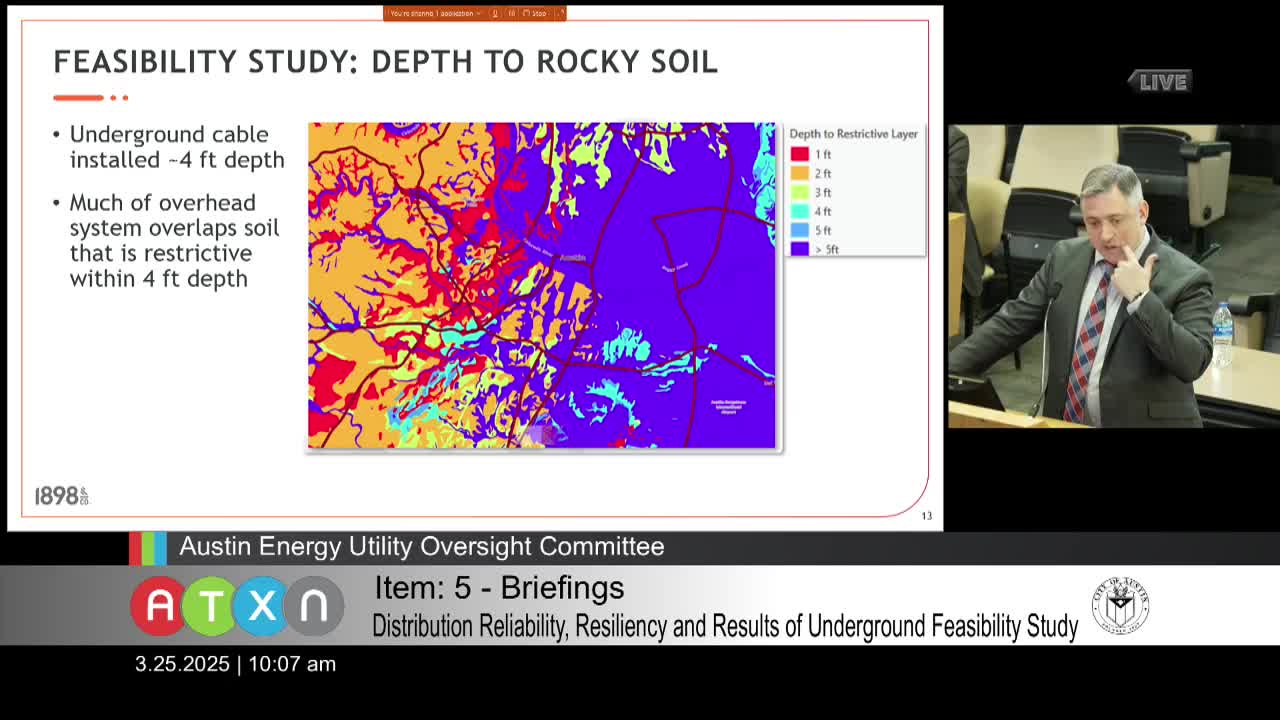Round Rock debates environmental impact of construction plans on local habitats
March 25, 2025 | Austin, Travis County, Texas
This article was created by AI summarizing key points discussed. AI makes mistakes, so for full details and context, please refer to the video of the full meeting. Please report any errors so we can fix them. Report an error »

In a recent meeting of the Austin Energy Utility Oversight Committee, discussions highlighted the complexities and challenges of infrastructure projects in the region, particularly concerning environmental considerations and geological conditions. The meeting underscored the importance of understanding local geography and ecology when planning utility work.
One committee member shared a personal anecdote about moving from Louisiana to Round Rock, Texas, where the rocky soil posed unexpected challenges for construction. This experience illustrated the need for specialized machinery to navigate the area's geological features, which can significantly impact project timelines and costs. The member emphasized that digging to a depth of three to four feet often encounters solid rock, necessitating additional equipment and resources.
The committee also addressed the environmental implications of utility work, particularly in sensitive areas. An environmental team conducted an impact assessment, focusing on critical habitats, preservation areas, and archaeological sites, including cemeteries. The discussion revealed that construction activities could disrupt local ecosystems, especially concerning protected species like the golden-cheeked warbler. The presence of nesting birds can halt work, highlighting the delicate balance between infrastructure development and environmental stewardship.
Overall, the meeting reflected a growing awareness of the intricate relationship between utility projects and their environmental context. As Austin continues to grow, these discussions will be crucial in ensuring that development is both efficient and responsible. The committee's ongoing efforts to address these challenges will likely shape future infrastructure initiatives in the region.
One committee member shared a personal anecdote about moving from Louisiana to Round Rock, Texas, where the rocky soil posed unexpected challenges for construction. This experience illustrated the need for specialized machinery to navigate the area's geological features, which can significantly impact project timelines and costs. The member emphasized that digging to a depth of three to four feet often encounters solid rock, necessitating additional equipment and resources.
The committee also addressed the environmental implications of utility work, particularly in sensitive areas. An environmental team conducted an impact assessment, focusing on critical habitats, preservation areas, and archaeological sites, including cemeteries. The discussion revealed that construction activities could disrupt local ecosystems, especially concerning protected species like the golden-cheeked warbler. The presence of nesting birds can halt work, highlighting the delicate balance between infrastructure development and environmental stewardship.
Overall, the meeting reflected a growing awareness of the intricate relationship between utility projects and their environmental context. As Austin continues to grow, these discussions will be crucial in ensuring that development is both efficient and responsible. The committee's ongoing efforts to address these challenges will likely shape future infrastructure initiatives in the region.
View full meeting
This article is based on a recent meeting—watch the full video and explore the complete transcript for deeper insights into the discussion.
View full meeting
